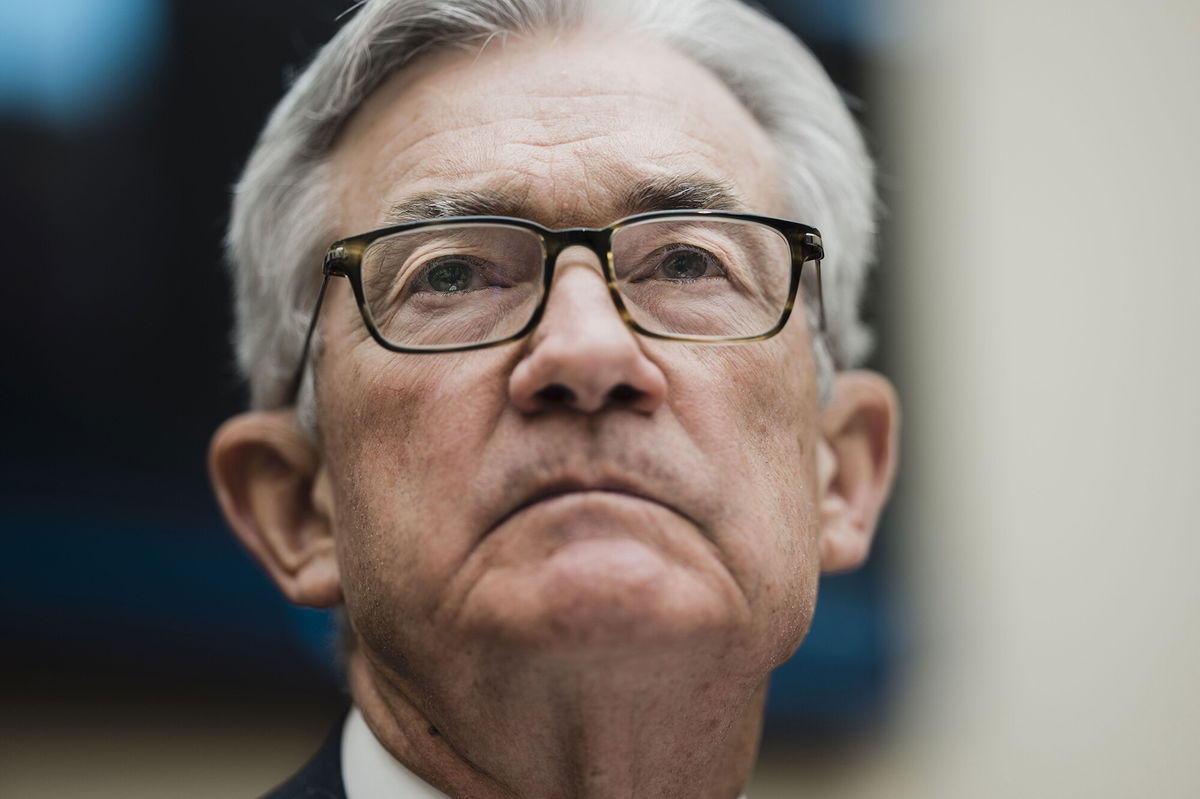Buckle up: The Fed is about to get tough on inflation

By Paul R. La Monica, CNN Business
Last month, the Federal Reserve raised interest rates for the first time since December 2018. Now there are growing expectations that the central bank is about to dramatically step up the size and pace of its rate hikes in order to put a brake on surging consumer prices.
St. Louis Federal Reserve president James Bullard, one of the more hawkish members among the Fed’s regional bank chiefs, reiterated at an event Monday that the Fed needs to “expeditiously” raise rates in order to tamp down inflation. (Inflation hawks typically push for higher rates while so-called doves favor lower rates to stimulate growth.) Bullard suggested the Fed could raise rates by as much as 75 basis points.
Fed chair Jerome Powell has started to sound a lot more hawkish in recent weeks, but he may not want to move as aggressively as Bullard would like. But it’s clear that rates are likely to start climbing a lot higher soon.
“The Fed should have taken the opportunity to raise rates earlier. There is only so much they can do now, it’s almost already too late,” said Johan Grahn, vice president and head of ETFs at AllianzIM. “But they have to get ahead of this, and unfortunately the recipe for that is to move more aggressively with rate hikes.”
Traders are now pricing in a nearly 100% likelihood of a half-point hike at the Fed’s May meeting, according to the widely watched federal funds futures trading on the CME, and a more than 25% chance of another 50 basis point increase in June.
Investors also are pricing in a more than 70% possibility that the Fed will lift rates by three-quarters of a percentage point in June. That would leave the Fed’s key short term rate at 1.5%, a dramatic rise from the beginning of the year, when rates were still near zero.
It can’t be stressed enough just how unusual it would be for the Fed to raise rates that sharply. The last time the central bank boosted rates by a half-point was in May 2000 when Alan Greenspan was Fed chair, just after the dot-com bubble peaked. The last three-quarter point hike took place under Greenspan, too, in November 1994. (Greenspan retired in 2006.)
The Fed is in a tough spot right now, according to José Torres, senior economist at Interactive Brokers.
“They have to tighten quickly and pray that nothing breaks. It’s the only policy they have,” Torres added. “Being so late to hike rates reduces the Fed’s flexibility.”
Bond investors have already figured out that rates have nowhere to go but up. The yield on the benchmark 10-year Treasury is now hovering near 2.9%, up from about 1.5% at the end of 2021. That has put upward pressure on mortgage rates, with a 30-year fixed home loan now averaging a rate of 5%.
Recession fears rising
Higher rates could eventually slow the red hot housing market, but that could be a blow to the broader economy.
That’s exactly what happened when the Fed aggressively raised rates to 20% in the late 1970s and early 1980s under the late Paul Volcker to fight double-digit inflation. The consequence was a double-dip recession, then a brief downturn in 1980 followed by another pullback that lasted from mid-1981 through late 1982.
With that in mind, the Fed has to be ready to pivot quickly to reverse any damage that comes from higher rates, which is what the Fed has historically done. It started cutting rates in July 1995, for example. And in 2001, following a massive stock market meltdown, the Fed reversed course and lowered rates a whopping 11 times.
Jenny Renton, a partner with Ruffer, an investment management firm, worries that the Fed is likely to be overly aggressive with rate hikes as it belatedly tries to shove the inflation toothpaste back into the tube.
She’s concerned that Fed rate hikes could lead to a recession. And that would mean the Fed may need to quickly cut rates again, leading to more volatility.
“People are talking about a policy mistake coming from the Fed, but it’s already happened. The Fed was way behind the curve with inflation. Now they will have to react to recession pressures,” she added.
Still, others think the Fed should remain more focused on inflation worries than concerns about an eventual slowdown. After all, the job market remains tight, with the unemployment rate at just 3.6%…not far from a 50-year low. And the Fed has a so-called dual mandate: It needs to focus on both price stability and maximum employment.
“I believe that [the Fed] takes their mandate quite seriously,” said Brad Conger, deputy chief investment officer at Hirtle Callaghan & Co., in an email to CNN Business. He added, however, that “the additional pressure on prices from the Ukraine war has made that calculus more fraught.”
“Before the war, it seemed plausible for inflation to gradually subside to a 3% range. Given the impacts of the war and a Covid outbreak in China now foreseeable, we would be fortunate to see consumer price inflation below 5%,” Conger added.
The-CNN-Wire
™ & © 2022 Cable News Network, Inc., a WarnerMedia Company. All rights reserved.
